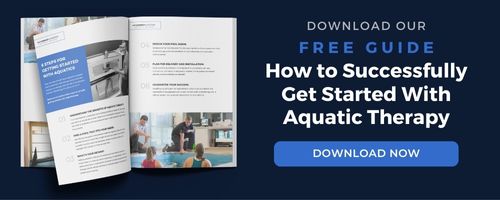Living with cerebral palsy is not easy. It’s a debilitating disorder that affects mobility. Exercising can help maintain range of motion and decrease pain. Aquatic therapy is especially valuable to cerebral palsy patients for many reasons.
Jump to Sections:
- Treating Cerebral Palsy with Hydrotherapy
- What is Cerebral Palsy?
- Treatments for Cerebral Palsy Patients
- How Hydrotherapy Helps Manage Cerebral Palsy Symptoms
- Aquatic Therapy Exercises for Cerebral Palsy Patients
- Cerebral Palsy and Aquatic Therapy Studies
- Request More Information About Hydrotherapy Equipment From HydroWorx
Treating Cerebral Palsy with Hydrotherapy
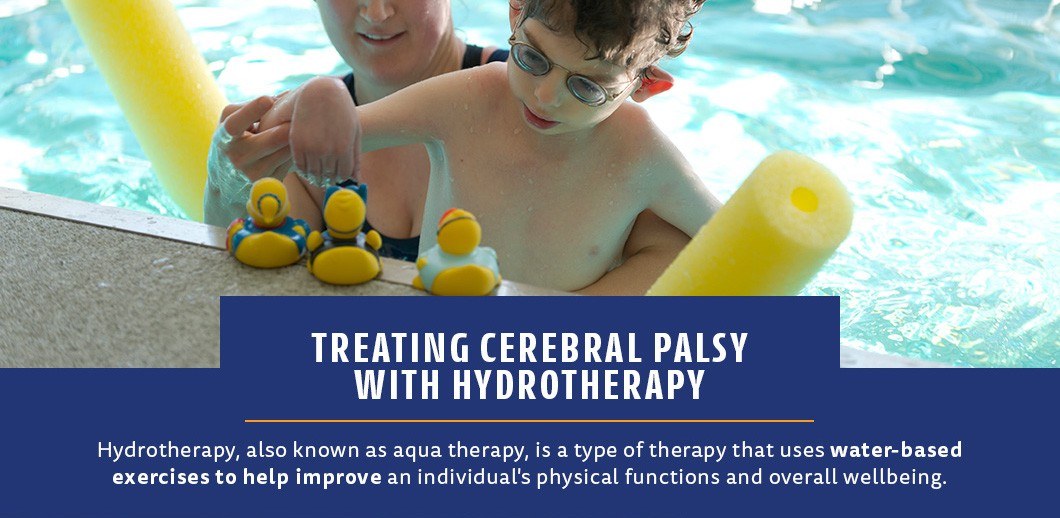
Hydrotherapy, also known as aquatic therapy, is a type of therapy that uses water-based exercises to help improve an individual’s physical functions and overall wellbeing. Medical professionals have widely recognized this therapy method as a valuable treatment option for children and adults with cerebral palsy. The buoyancy of water makes it easier for cerebral palsy patients to move more effectively and safely. When done under the supervision and guidance of a certified therapist, Hydrotherapy can be helpful in improving the physical and mental health of cerebral palsy patients. Read on to learn more about this therapy, its benefits for cerebral palsy patients and case studies describing patient success stories.
What Is Cerebral Palsy?
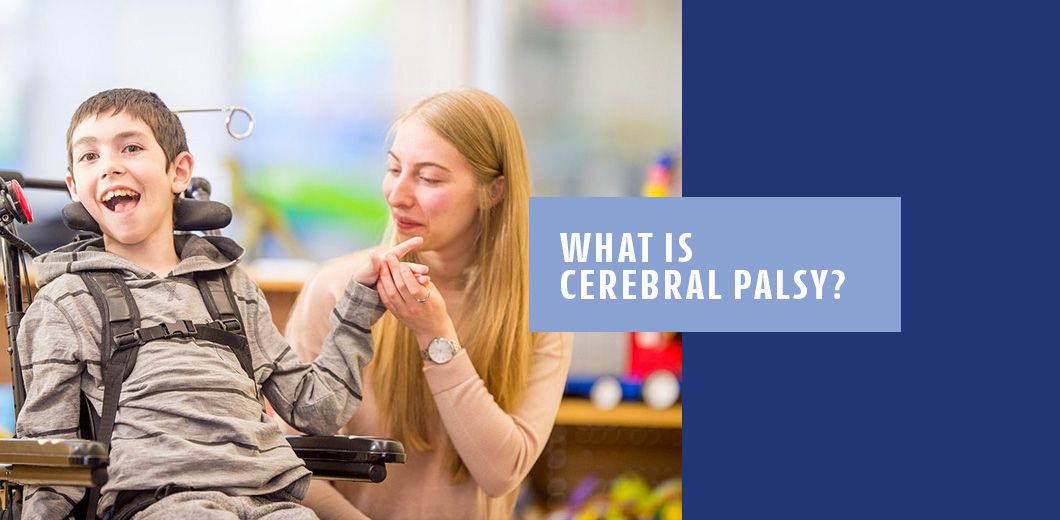
Cerebral palsy is a disorder that affects the movement, muscle tone and posture of an individual. The disorder is not genetic but is caused by damage that occurs to a developing brain, most often before birth. Symptoms usually appear early, during infancy or preschool years, most often manifesting as exaggerated reflexes, abnormal posture, or issues with floppiness or rigidity in the limbs and trunk of the body. The effect and severity of cerebral palsy symptoms vary widely from person to person, but the Mayo Clinic reports these as some of the most common symptoms seen in cerebral palsy patients:
- Variations in muscle tone and function, resulting in limbs being too stiff or too floppy
- Spasticity, where limbs experience exaggerated reflexes
- Rigidity, where the patient has normal reflexes, but stiff muscles
- Ataxia, or lack of muscle coordination
- Tremors or involuntary movements
- Reduced range of motion due to stiffness
- Athetosis, where the patient experiences slow, writhing movements
- Delays in motor skill development, such as the late development of sitting up or crawling
- Favoring one side of the body over the other
- Difficulty walking or abnormal walking behaviors like an asymmetrical or crouched gait
- Problems swallowing and eating
- Excessive drooling
- Difficulty with sucking
- Delays in speech development or difficulty speaking
- Problems with precise motions like picking up small items
- Seizures
- Difficulty with vision, such as eye muscle imbalances
- Problems with hearing
- In some cases, intellectual disabilities
- Abnormal touch or pain perceptions
- Urinary incontinence
- Issues with mental health, like depression
Each case of cerebral palsy is unique, affecting individuals differently. Physical disability associated with cerebral palsy may occur in a single limb, on one side of the body or through the whole body, depending on the area of the brain affected. Fortunately, the brain disorder that causes cerebral palsy does not change over time, so patients won’t see their symptoms worsen with age as a result of brain deterioration. However, some symptoms, like muscle shortening and muscle rigidity, will deteriorate over time if left untreated.
Treatments for Cerebral Palsy Patients
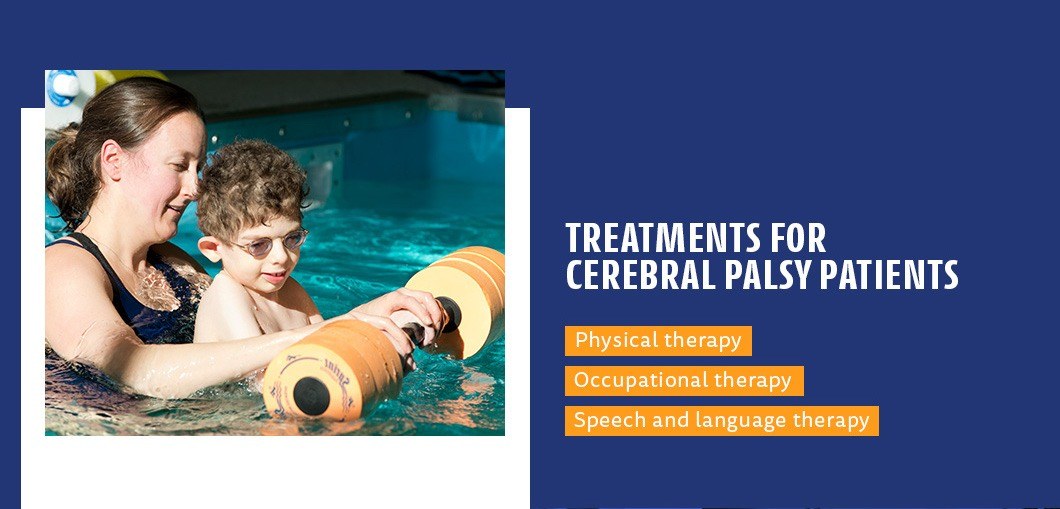
Cerebral palsy patients often use a combination of therapy and medications to help manage their symptoms. Medications can often help to minimize seizures, help with muscle control and reduce issues with drooling. These are typically combined with a variety of therapies, which can be used to help cerebral palsy patients enhance their functional abilities in their everyday lives. Here are a few examples of common therapy methods used to help cerebral palsy patients:
- Physical therapy: Physical therapists can work with children and adults with cerebral palsy, prescribing specific exercises to help train their muscles and increase strength, flexibility, balance and mobility. Additionally, physical therapists can help the family and caretakers of cerebral palsy patients learn how to safely care for their child and assist them with their daily needs and exercises. Over time, physical therapists can help adult patients with cerebral palsy complete wheelchair assessments and develop exercise regimens to manage pain and symptoms.
- Occupational therapy: Occupational therapists help patients use alternative strategies and adaptive equipment to maximize their independence. In childhood, occupational therapists can work with patients in choosing splints, braces, walkers or wheelchairs, and continue to help patients with these choices into adulthood.
- Speech and language therapy: Speech-language pathologists help patients improve their ability to communicate with others. Often, this is accomplished with speech training, sign language teaching or communication devices, based on the individual’s unique needs. Patients who can speak often need speech training to help train the muscles of the mouth to form more coherent words, while nonverbal patients often need an alternative communication method like sign language, computers or voice synthesizers. Additionally, speech therapists may also help address and train patients through their difficulties with eating and swallowing.
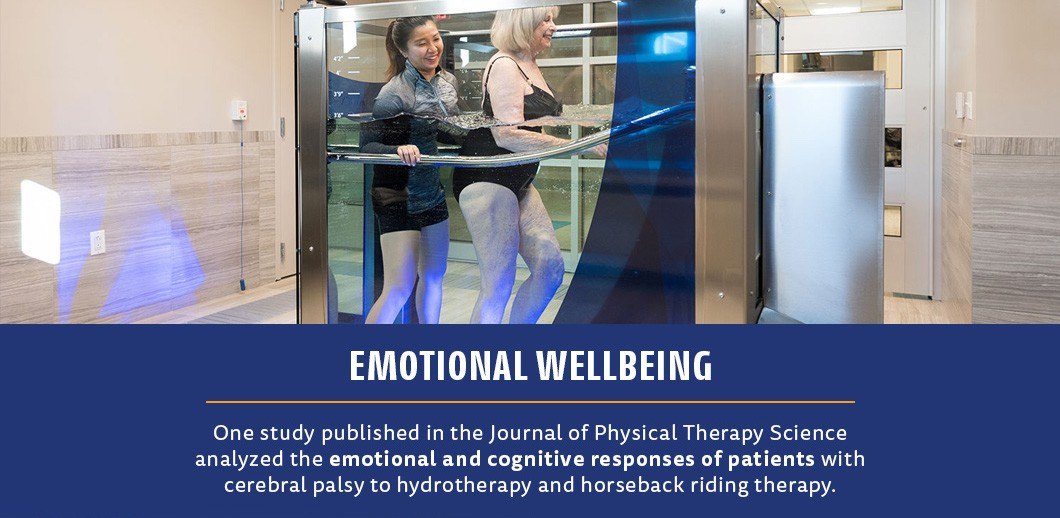
In some cases, surgery may be required to help manage the symptoms of cerebral palsy. Orthopedic surgery can be used to help treat severe deformities and functional problems, like problems in the bones and joints. Surgeons may also surgically lengthen muscles and tendons shortened by severe contractures, helping to improve mobility and reduce pain in the patient’s daily life. In more severe cases, when other treatments prove inadequate, surgeons may also cut the nerves of spastic muscles, relaxing the muscle to reduce spasticity at the cost of some sensation in the limb.
While all these therapy options can help manage the symptoms of cerebral palsy, they do not necessarily address the overall wellbeing of cerebral palsy patients. This is where aquatic physical therapy comes in — aquatic therapy uses physical activity to help patients improve their motor skills as well as their emotional and mental wellbeing, which are often overlooked by other treatment methods.
How Hydrotherapy Helps Manage Cerebral Palsy Symptoms
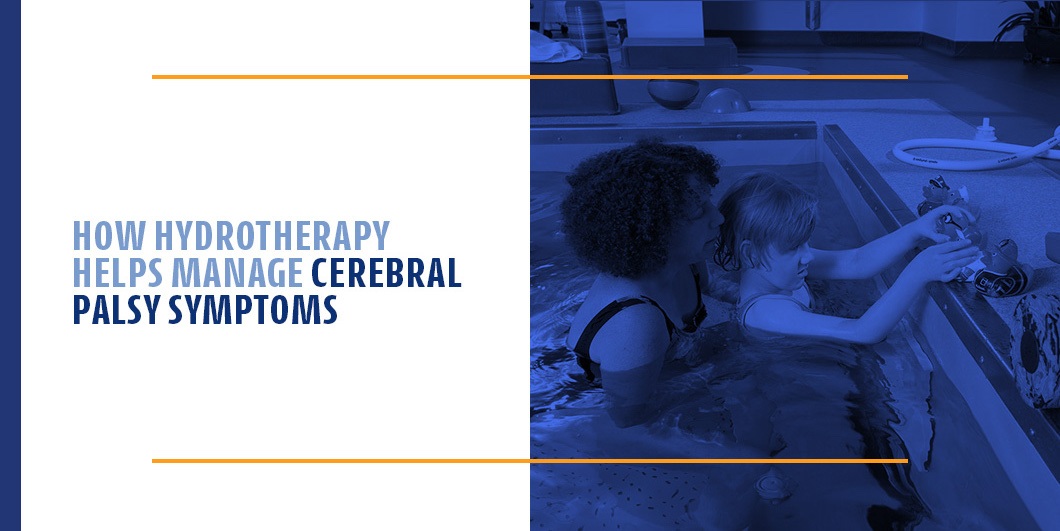
Hydrotherapy is a type of recreational therapy that uses water-based exercises to help improve a person’s physical functionality and wellbeing. Commonly used as a method of rehabilitating the body after trauma, Hydrotherapy has come to be recognized as a valuable method for treating people with cerebral palsy. In a heated pool, water provides a soothing, buoyant environment for cerebral palsy patients, decreasing a patient’s effective weight by 90 percent. This allows cerebral palsy patients’ muscles relax in order to move and exercise more freely in water without placing undue stress on their musculoskeletal system.
Generally speaking, aquatic therapy specialists typically have some primary goals when working with cerebral palsy patients — these include helping the patient gain more muscle control, increase their self-confidence, improve their physical function and gain more independence. Often, Hydrotherapy achieves these goals. Some of the physical and mental benefits of Hydrotherapy to cerebral palsy patients include:
- Reducing discomfort: The whole-body pressure provided by water can be effective at relieving pain in the joints and muscles. This can help patients recover from a therapy session and means that they can exercise in the water with less pain. This effect is further amplified when the patient is working in warm water, which allows muscles with high tone to relax providing a better environment for movement.
- Prevents injuries: The buoyancy of water helps prevent cerebral palsy patients from injuring themselves during exercise by reducing the amount of stress on their joints. This allows them to perform activities, both aerobic and anaerobic, with less chance of injuring themselves.
- Improves muscle tone and control: Water, while decreasing the weight of the patient, increases resistance as the body moves through it. Simply walking in water provides ten times more resistance than walking on land due to the viscosity of water. This means that even by doing simple movements, patients can experience deep exercise, building muscle and increasing muscle control more quickly and effectively, all without placing undue stress on their joints. This is especially helpful for patients having difficulty with low muscle tone. For those with high muscle tone, the warm water combined with the hydrostatic pressure makes movement underwater easier.
- Improved cardiovascular function: When the body is submerged, the heart must pump more blood to make up for the increase in pressure. Even without exercising or moving, this helps to improve a patient’s cardiovascular fitness and increase their endurance
Improves flexibility: Water provides support as well as resistance, which can make it easier for patients to work through flexibility training exercises to increase their range of motion. This is particularly helpful for cerebral palsy patients working with rigid limbs and shortened muscles. - Improved confidence: Any disability takes a mental and emotional toll on a patient, and cerebral palsy patients are no exception. Lifelong difficulties with range of motion and pain can wear on the patient’s psyche. However, Hydrotherapy can bring a sense of accomplishment to the patient’s life, especially as they see improvements in their daily functionality. This, in turn, can help improve their self-confidence, emotional health and overall disposition.
- Stress reduction: Any form of exercise can help reduce stress and tension, but when coupled with pain relief, this effect is even more pronounced. Hydrotherapy does both for cerebral palsy patients, providing a physical outlet while also reducing physical pain, delivering highly effective stress relief.
While traditional physical therapy offers many benefits for patients with cerebral palsy, aquatic therapy’s benefits provide an additional avenue to improve cerebral palsy patients’ overall health and well-being, empowering them both physically and mentally. When guided by a trained aquatic therapist, cerebral palsy patients often enjoy improved physical and psychological health from aquatic therapy, improving their quality of life in every aspect.
Aquatic Therapy Exercises for Cerebral Palsy Patients
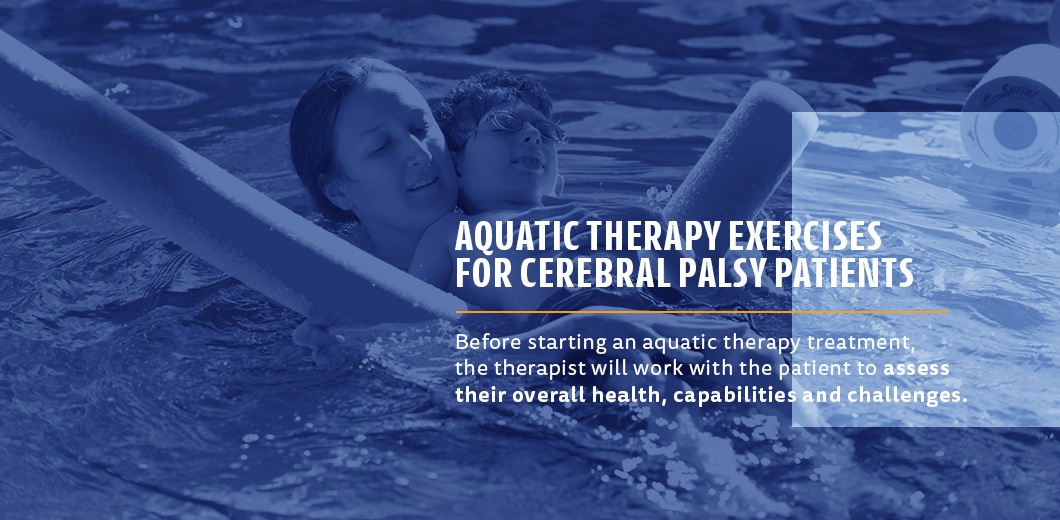
Before starting an aquatic therapy treatment, the physical therapist will work with the patient to assess their overall health, capabilities and challenges. This will help the aquatic therapist develop a program that best suits the specific needs of the patient. Because of this individualization, aquatic therapy treatments look different based on the needs of the patient. However, most sessions are 30 to 45 minutes long, and tend to follow a similar formula:
- Warm-up: Sessions often start with a warm-up period, where physical therapists guide the patients through stretches inside or outside of the pool. This helps them prepare their bodies before they are submerged. Usually, stretching routines are specifically tailored to the needs of each patient.
- Exercise: After the warm-up period, the therapist guides the patient through a series of activities tailored to the patient’s needs. These exercises start simple and gradually increase in intensity as the patient’s body gets used to the motions. Aquatic therapy exercises usually incorporate flotation devices, body boards, floating barbells and other equipment to add to the experience and target specific areas of the body. Underwater treadmills and resistance jets can be valuable in improving gait and mobility. Over the weeks and months of a therapy regiment, the exercises may get deeper or more intense as the patient sees the benefits of their work.
- Cool down: Once the patient has completed the exercises, the physical therapist will guide the patient through a series of activities designed to bring down the heart rate and focus on range of motion. This will help prepare the patient to get out of the water.
The exercises involved in each session will usually focus on conditioning, cardio and rhythmic motions to help cerebral palsy patients gain greater muscular control and range of motion. However, the specific style of exercise largely depends on the needs of the patient. Based on the severity of a patient’s disorder, their age, physical fitness level and additional health concerns, they may work with any of the following popular Hydrotherapy exercises for cerebral palsy:
- Swimming: Certainly the most widely recognized aquatic activity, swimming can be a powerful exercise for cerebral palsy patients, allowing them a greater level of independence and mobility than they have on land. Usually assisted with flotation devices, patients focusing on swimming exercises learn how to move in the water using different motion styles, focusing on specific areas of the body to gain muscle tone and control. This work translates to land and can help patients gain increased muscle strength and control in their daily lives.
- Aquatic yoga: Aquatic yoga is a highly therapeutic exercise type, blending the massaging effects of water with the conditioning positions of yoga for a whole-body effect that is both powerful and relaxing. This low-impact exercise style focuses on flexibility and muscle control, all while being supported by water. This type of exercise is particularly effective at helping patients gain or maintain joint mobility.
- Underwater walking: Walking on an underwater treadmill can be a highly effective cerebral palsy exercise, relieving joint stress while also placing increased resistance on the participant. This form of exercise also translates directly to land, conditioning the muscles patients need to improve or maintain their gait in their everyday life. While it works great for exercise, underwater video monitoring can help a patient to make corrections to their gait for improved balance and mobility.
This list only scratches the surface — vastly more exercise types are being adapted to the water to help meet the needs of aquatic therapy patients. Other common activities include breath control exercises, range of motion exercises and balancing exercises using flotation devices in deep water, all of which can help patients improve daily functions like walking or breathing. Social games are also popular in children’s treatment regimens, especially among children having difficulty with social interaction. With any of these exercise forms, equipment is often used, either to keep patients safe or to help them complete certain exercises. For example, flotation vests and pool noodles are often used to help keep patients afloat, while weights and toys are often used as part of the exercises.
In all cases, Hydrotherapy uses specific types of pools for the safety of the patients participating. These pools are usually smaller than standard pools and are typically made with fiberglass or stainless steel shells, built-in equipment, safety rails and easy-grip edges. Additionally, warm therapeutic pools usually come with a thermostat to help control water temperature. For visual examples of what these pools look like, and what exercises entail, take a look at the HydroWorx video library.
Cerebral Palsy and Aquatic Therapy Studies
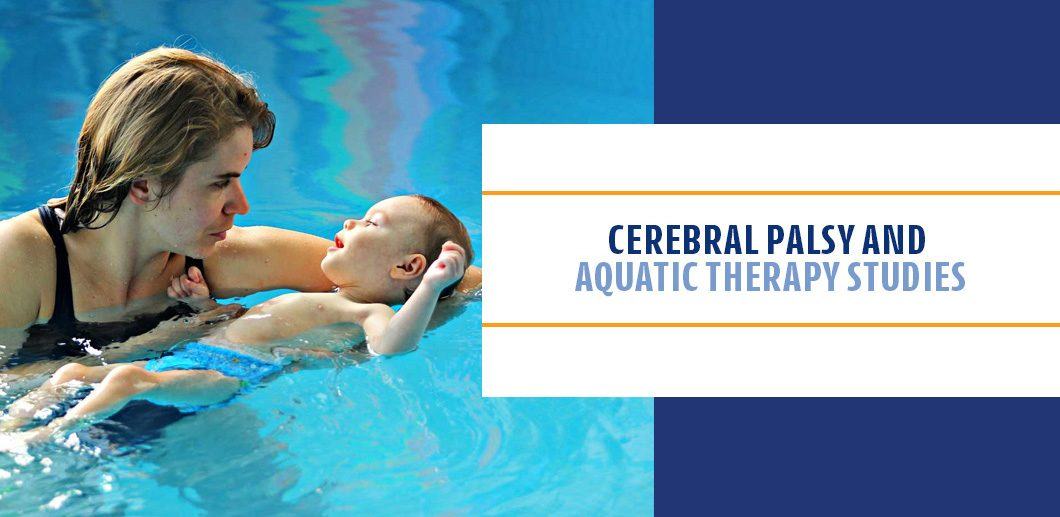
The benefits of aquatic therapy for cerebral palsy have been analyzed in many studies, and the results have been extremely positive. Here are just a few results seen in studies across the world:
Posture and Function
Mary is a patient with cerebral palsy at Pieters Family Life Center. At the time of the case study, she was undergoing treatment for bursitis caused by an injury. With bursitis, the fluid-filled sacs that act as cushions between muscles and joints become inflamed, resulting in pain at the joint. For Mary, the pain was substantial enough that she was having difficulty performing daily tasks. As a result, she pursued Hydrotherapy to strengthen and stretch her muscles and joints. Some of the exercises she used during this therapy included:
- A warm-up to loosen stiff muscles and joints.
- Side steps while holding onto the bar for support.
- Using the support bar to push herself up and down, to strengthen her arm and leg.
- Ankle pumps with weights.
- Walking on the treadmill allowing the hamstrings to lengthen.
After about a year and a half of this treatment regimen, Mary had noticed significant improvements in her ability to hold herself up and walk, and her posture was visibly improved.
Emotional Wellbeing
One study published in the Journal of Physical Therapy Science analyzed the emotional and cognitive responses of patients with cerebral palsy to Hydrotherapy and horseback riding therapy. In total, the study enrolled 32 right-handed CP patients, ages 8 to 48, all of whom were able to walk independently or with the help of a hand-held mobility device. Each patient was assigned to one of three groups — the control group, the horseback riding group or the aquatic therapy group. The aquatic therapy group specifically underwent a program using the following formula:
- Warm-up exercises in a pool for 10 minutes
- Assisted exercises for 30 minutes
- 10 minutes of cool-down exercises
Researchers assessed all participants before and after their treatment session, using electroencephalograms and self-reporting tests to assess patient cognitive and emotional responses. At the end of the study, researchers found that aquatic therapy patients showed significant improvement in both positive emotions and in brain activation compared to the other two groups.
Gait Efficiency
One study from the Journal of Disability and Rehabilitation looked at the efficacy of a ten-week group aquatic training program for twelve children with cerebral palsy. The children participated in twenty sessions, supervised by three physical therapists and a sports teacher. Ten children completed the program, which included the following:
- 20 sessions, each 45-minutes long
- Mild to moderate intensity for over half the session
- Heart monitors and flotation devices for safety and usage during the session
In the children who completed the program, researchers discovered that aquatic therapy had made a difference in the children’s overall physical health. While secondary measures like knee strength and gross motor function did not show the same results, the primary focus of the study, gait efficiency, had increased significantly. Researchers attributed much of this improvement to the children’s increased cardiorespiratory function.
Other Benefits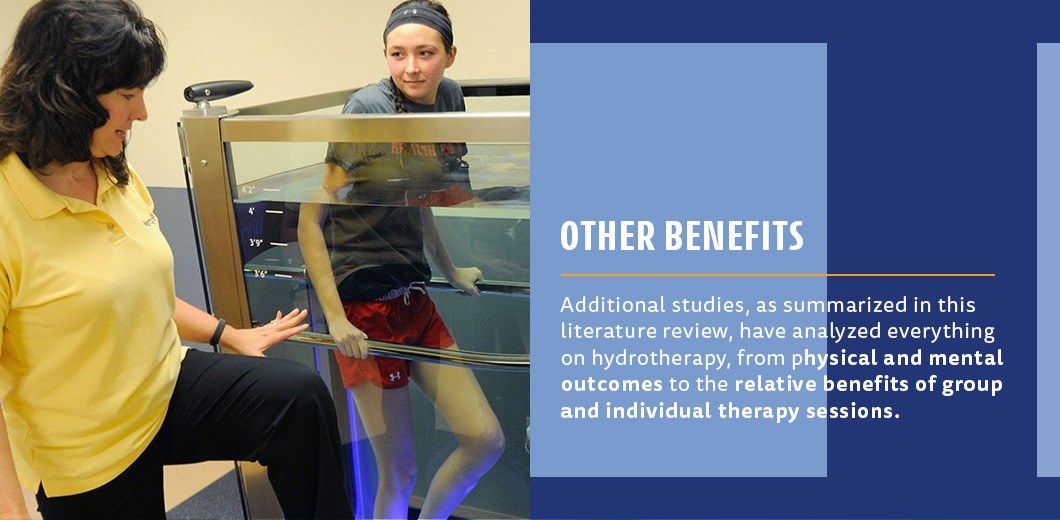
Additional studies, as Hydrotherapy on Health of Cerebral Palsy Patients: An Integrative Review summarized in this literature review, have analyzed everything on Hydrotherapy, from physical and mental outcomes to the relative benefits of group and individual therapy sessions. Overall, this review found studies showing positive effects of Hydrotherapy on gross motor functions, focus, strength, balance and social functionality, among other performance measures.
Get Started
The benefits of aquatic therapy for cerebral palsy are clear, showing that it is a highly effective option for patients looking for a safe, comfortable form of exercise therapy that will cater to their physical as well as their psychological well-being. For patients and clinics alike, hydrotherapy is an option worth exploring. If your clinic is looking for a new therapy option, HydroWorx has everything you need to learn more.



